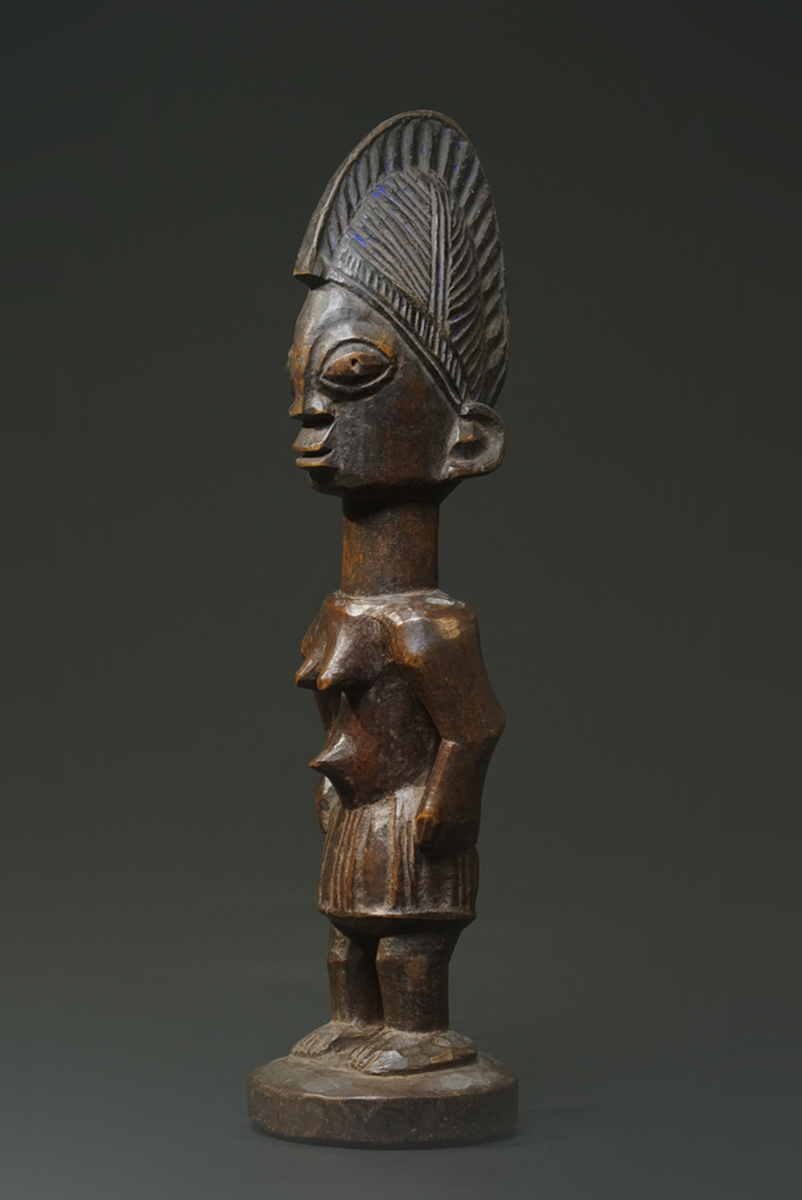 |
 A female Ibeji sculpture, fine, glossy patina, traces of age und ritual use.
Yoruba of Nigeria and of the Benin Republic are known for having an extraordinarily high rate of multiple births. The rate of twin births is one of the highest in the world, 45 of every 1,000 births (in the United States it is 28.9 of every 1000). There is also a high mortality rate; half of the twins die shortly after birth.
In earlier times, new-born twins, or ibeji, as they are called, were believed to be evil, monstrous abnormalities and infanticide was a common practice. However, such beliefs and practices were later superseded and reversed, and by the middle of the 18th century twins came to be seen as a blessing; theywere awarded the status of minor deities, called Orishas, and their arrival was viewed as an omen of good fortune for the family. By the 19th century the cult of the Ere Ibeji was firmly established and continues to this day. The death of one or both twins is regarded as a great calamity for the family, one which requires immediate appeasement of the soul of the deceased child.
The first born twin, whether a boy or a girl, is always called Taiwo, meaning ‘having the first taste of the world’, whereas the second is named Kehinde, meaning ‘arriving after the other’. Although being born first Taiwo is considered as the younger twin. His senior Kehinde is supposed to send out his partner to see what the outside world looks like. As soon as Taiwo has given a signal by crying, Kehinde will follow. Kehinde is supposed to be more careful, more intelligent and more reflective, while Taiwo is believed to be more curious and adventurous, but also more nonchalant (Olaleye-Oruene, 1983; Stoll & Stoll, 1980).
sold
Height: 35 cm
Weight: 450 g |
 photo: wolfgang-jaenicke.com, for more information, please write us an e-mail with the identification number of the photo identification no. GSC05681.jpg
photo: wolfgang-jaenicke.com, for more information, please write us an e-mail with the identification number of the photo identification no. GSC05681.jpg |
|
